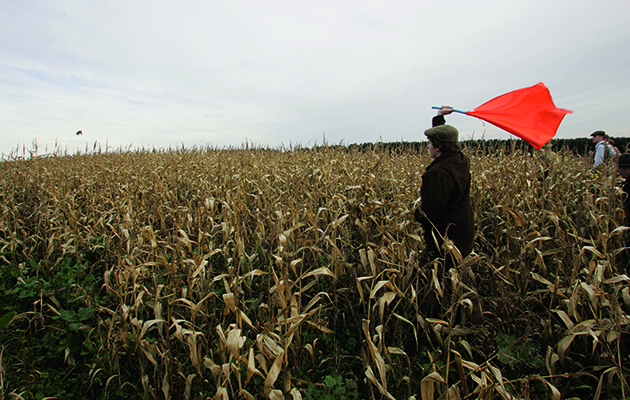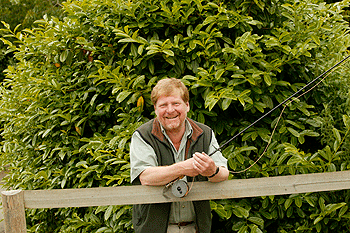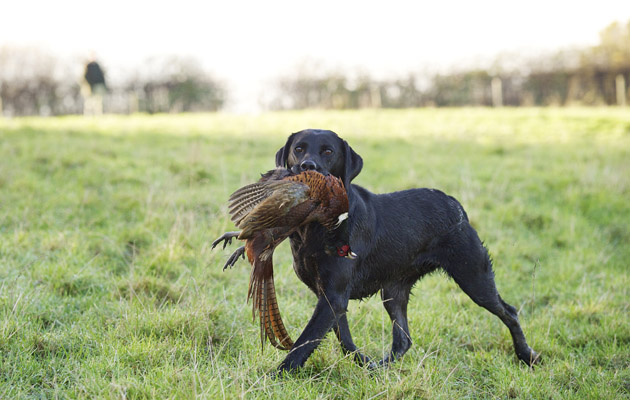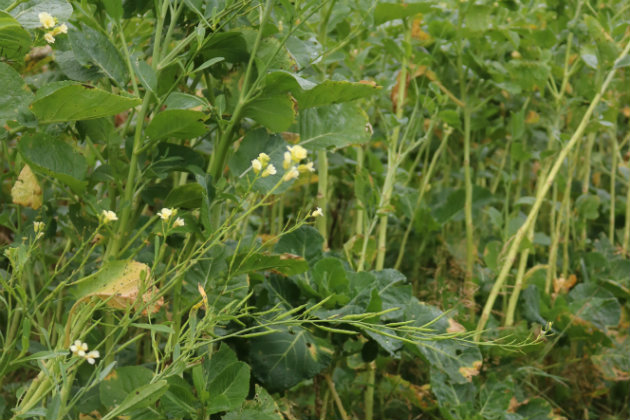Planting gamecover crops is one thing. Getting them to grow to their full potential is another. We nurture ours through…
Win CENS ProFlex DX5 earplugs worth £1,149 – enter here
What ground cover is the hardest for a gundog to work?
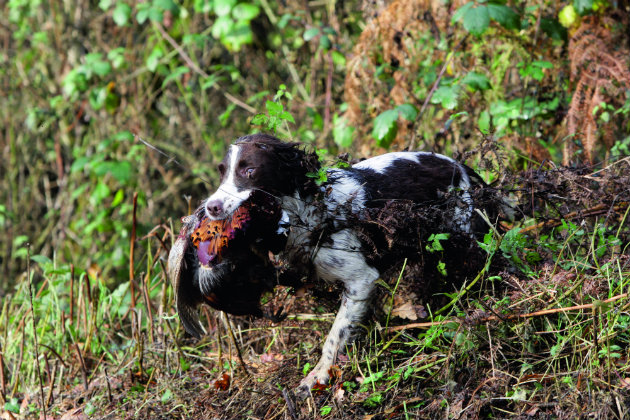
A multi-purpose gundog of any breed should be able to deal with anything that is put in front of it. But depending on what part of the country you live in, or whether you travel to work your dog, it may not come across certain types of cover and develop the different styles that are needed to deal with it efficiently. It goes without saying that different working dog breeds have different styles and different ways of working, but the problems can be the same whether you have a “nose to the ground” spaniel or an “air scenting” HPR.
Root crops – challenging ground cover
Believe it or not, root crops are considered by many gundog handlers to be the most challenging cover in which to work a dog. Depending where you live you may not even come across vast fields of roots, but in certain areas such as Suffolk, Nottinghamshire and Lincolnshire it is pretty well all you will see. For those that have no idea of what root crops look like, in most cases they grow to about knee high with the top of the root just above the ground, which can make walking really awkward – especially if you are walking across the rows. The tops have quite wide leaves, which hold water like a sponge and create a canopy where the gamebirds love to hide under. The first time you take a gundog to hunt in roots, the chances are that it will bounce around like a gazelle and be pretty ineffective. They must learn to get their heads down and work underneath the leaves. Another issue you may have is that because the crop is planted in rows, and these act as runways for the birds, the dogs will tend to pull out along these and any hunting pattern can fall apart.
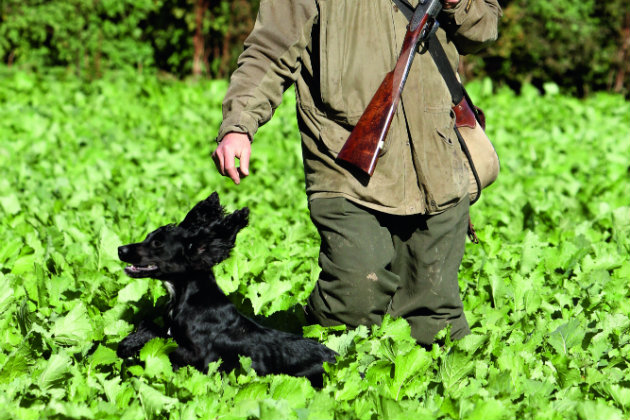
A dog will usually bounce like a gazelle the first time it hunts in roots
Watching gundogs retrieving in a ground cover of roots can be the most exciting thing to watch, because you can see everything that is going on with the dog. I must add that on a windy day it can be very hard for your dog to hear any whistle commands when it is working underneath the leaf canopy, so make allowances for the apparent deafness of a normally well-trained dog.
Thick brambles are a nightmare for a dog
There is no doubt that bramble will test a dog’s heart and although thick clumps are a nightmare for a dog to get through, I think that a covering of low loose bramble runners are as bad, if not worse, for small gundogs such as cockers. One of the issues you may well come across when working bramble is that the dog learns to go from bush to bush rather than working any kind of quartering pattern. Also quite often you can lose sight of your dog, especially if the cover is quite thick. Occasionally you may find there are birds taking refuge that are unable to take flight and the dogs quickly learn that they can peg them, which is not a habit to encourage. Some dogs learn that by getting wind side of the bramble they can scent if there are any birds hiding and then they will hit the cover and flush the bird. Working a dog in such punishing cover takes power and persistence, but a good bramble dog is worth its weight in gold.
White grass and rushes
Easy cover I hear you say… how wrong you are! If you are lucky enough to have areas of white grass or rushes to work your dog, then I am very envious. To the uninitiated, this kind of cover appears to be really easy but whereas bramble will test a dog’s heart, rough grass will test its nose.
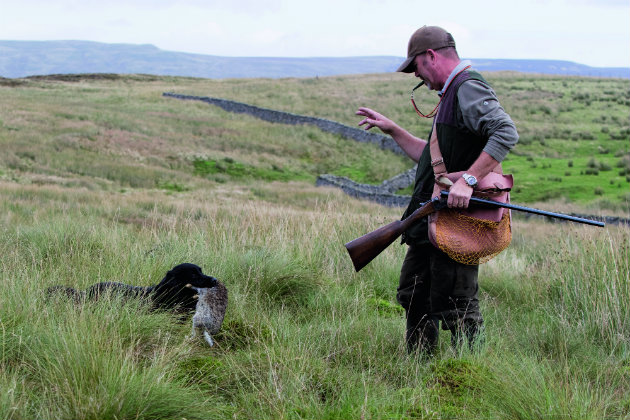
Be careful not to push on too fast when working white grass and rushes
The main issue is there is nothing to hold the dog back, a novice will work to the pace of its legs rather than the pace of its nose and will push on too fast and therefore, as a consequence, miss game – especially if there are rabbits on the ground. The dog must learn to be methodical in its hunting and not rush from clump to clump, the handler must also learn to slow his own pace and give the dog the chance to investigate every potential game holding area.
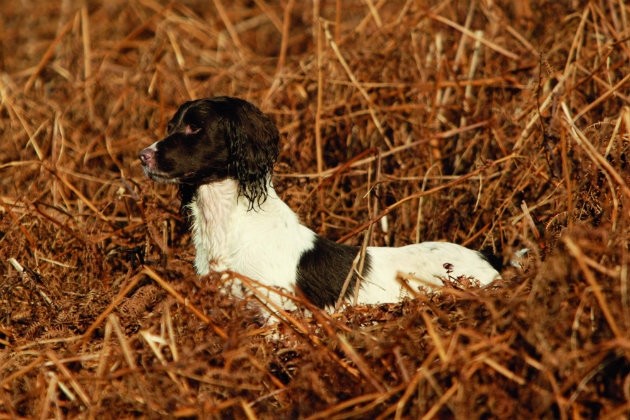
Dogs need to learn to push under the fronds and back out through
Bracken
By far my most favourite kind of cover to work a dog. Later in the season when the bracken has gone over it can form quite a firm surface and the dog needs to learn to get underneath the fronds and to push back out through them. Pheasants will tend to sit very tight in laid bracken and it needs a dog that is very through in its hunting to get them to flush. Earlier in the year it can be quite hard to see your dog because bracken can grow to chest height and just beware of the spores as some dogs can get a reaction from them.
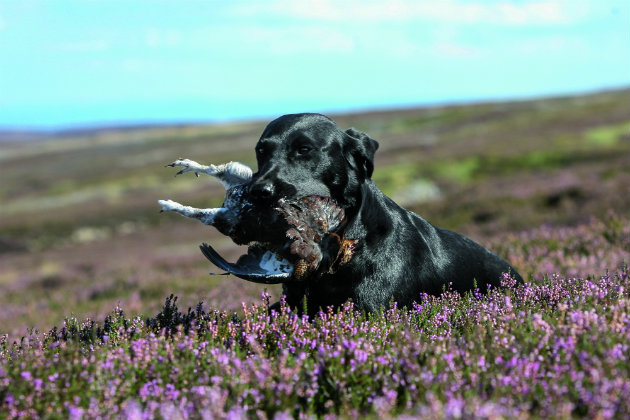
Heather pollen can be intense, which must make scenting conditions difficult
Heather
Heather can be brutal to a dog, especially where it has been burned off. The remaining stalks will scratch and tear at the dog’s legs and belly. During the early season the pollen is quite intense and must make the scenting conditions very difficult for a dog. Like the bracken and root crops, a dog that is new to working on heather moorland is likely to bounce over the top where they need to learn to get their heads down and hunt underneath – especially when working on grouse or rabbits. The real advantage of working on heather is that you can see everything that the dog’s doing and therefore you should be able to keep control of what is going on.
Hedgerows
Hedgerows can be the proverbial nightmare because they act like motorways for gamebirds and can pull on the best trained gundog. If you have to work a hedge, then it is best to walk away from the bushes so you have a better view of what is going on. Ideally the dog should work a “stitching pattern”, which means it will go along the bottom of the hedge for about 10 to 15 metres while you walk forward, you call the dog back and put it back in – basically it is hunting a series of loops.
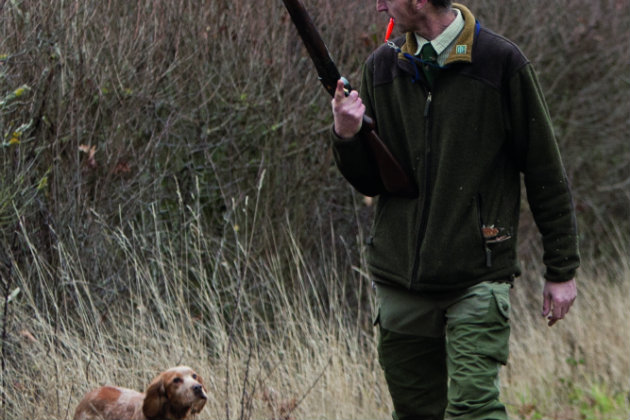
Work a stitching pattern along the bottom of the hedgerow
Be aware that it is very easy for the dog to get on foot scent and get too far ahead, you need to have your wits about you when you get to a hedge corner because there is a good chance that this is where the birds will congregate after being pushed along the hedge line and all hell can break loose.
Maize
There is only one piece of advice when working maize cover with a dog – either keep it at heel or put it on a lead. This kind of cover can hold a lot of birds and they inevitably run along the rows, it is very easy for a dog to get out of control or even get quite disorientated, so it is far better to keep it next to you and in “neutral gear”.
Covercrops and the weather
Any wonder we’re obsessed with weather when our covercrops depend on it
Covercrops to the rescue
Why we should plan next season’s sowing
Solving problems with ground cover
Q) Several of the woods on our shoot have little, or no, cover at ground level and are almost completely…
Related Articles
Get the latest news delivered direct to your door
Subscribe to Shooting Times & Country
Discover the ultimate companion for field sports enthusiasts with Shooting Times & Country Magazine, the UK’s leading weekly publication that has been at the forefront of shooting culture since 1882. Subscribers gain access to expert tips, comprehensive gear reviews, seasonal advice and a vibrant community of like-minded shooters.
Save on shop price when you subscribe with weekly issues featuring in-depth articles on gundog training, exclusive member offers and access to the digital back issue library. A Shooting Times & Country subscription is more than a magazine, don’t just read about the countryside; immerse yourself in its most authoritative and engaging publication.






